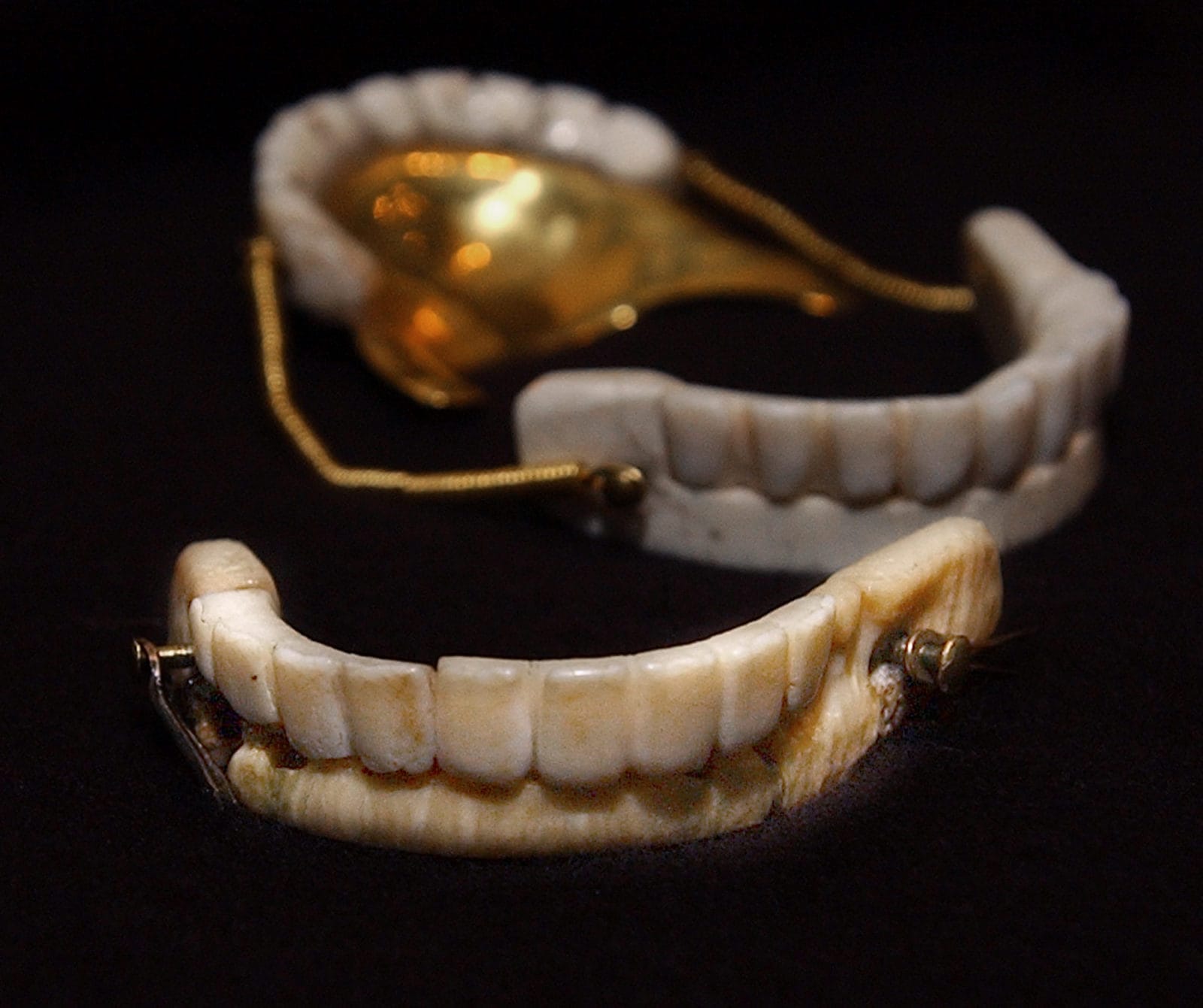Contrary to popular belief, George Washington did not have wooden teeth. The image of our esteemed first president with a mouth full of wooden teeth is a myth that has persisted through the ages. The truth, as is often the case, proves far more intriguing. Washington’s dentures were crafted from a combination of materials, including ivory, gold, lead, animal teeth, and even human teeth. This article will delve into the fascinating history of Washington’s dental struggles, the materials used in his dentures, and the broader historical context this seemingly mundane aspect of his life reveals.
Washington’s Lifelong Dental Battles
George Washington’s dental problems began in his twenties and plagued him throughout his life. While the exact causes are unknown, historians suggest several contributing factors:
- Genetics: Washington may have had a genetic predisposition to dental problems.
- 18th Century Dental Practices: Dental care in the 18th century was rudimentary, often involving painful extractions that likely exacerbated existing problems.
- Substances: Washington reportedly used tooth powders containing abrasives that may have damaged his enamel.
By the time he became president, Washington had only one natural tooth remaining. His dentures, while certainly not a perfect solution, allowed him to eat and speak more easily and likely improved his public image.
A Glimpse Inside: The Components of Washington’s Dentures
Washington’s dentures were a testament to the dental practices of the late 18th century – a fascinating mix of ingenuity, social dynamics, and personal history. To learn more about who made George Washington’s dentures and debunking the myth that he had wooden teeth, read on. These dentures were intricate contraptions, and they weren’t just made of one thing. Here are the materials used in creating Washington’s infamous chompers:
- Ivory: The primary material used for Washington’s dentures was ivory, often sourced from elephants or hippopotamuses. Ivory was valued for its durability and resemblance to real teeth, although it tended to stain over time, which may have contributed to the myth of wooden teeth.
- Human Teeth: Perhaps the most intriguing element of Washington’s dentures is the inclusion of human teeth. These teeth were considered the highest quality option, offering the best strength and bite. Historians believe Washington acquired these teeth through various means, including purchasing them from enslaved people, which casts a dark shadow over this aspect of his legacy. It’s also been suggested that Washington may have included some of his own extracted teeth in his dentures. While it’s difficult to prove definitively, it’s certainly a fascinating possibility.
- Other Materials: Washington’s dentures also incorporated other materials, including gold for springs and fasteners, lead for adjustments, and even animal teeth from cows and possibly hippopotamuses, likely as a more affordable alternative to human teeth.
The Artistry of John Greenwood
John Greenwood, a prominent New York dentist, played a crucial role in crafting several sets of Washington’s dentures. Greenwood meticulously documented his work, providing valuable insights into 18th-century dental practices. The surviving sets of Washington’s dentures, carefully preserved, offer a tangible link to the past and a testament to Greenwood’s skill.
More Than Just Teeth: Uncovering Historical Narratives
Washington’s dentures provide a unique lens through which to examine broader historical contexts:
- Slavery: The use of teeth from enslaved people in Washington’s dentures highlights the brutality and ethical complexities of the institution. This practice, while considered acceptable at the time, underscores the dehumanization inherent in slavery.
- 18th-Century Dentistry: The materials, construction, and limitations of Washington’s dentures reveal the state of dental care in the 18th century. Pain management was virtually nonexistent, and the search for durable and aesthetically pleasing materials drove dentists to explore a variety of options, some more ethically questionable than others.
- Social Disparity: Washington’s ability to afford costly dentures crafted with materials like human teeth underscores the socioeconomic disparities of the time. Access to quality dental care, or any healthcare for that matter, was a luxury few could afford.
Beyond the Surface: Further Explorations
The story of Washington’s teeth extends beyond the materials used in his dentures. There are intriguing avenues for further exploration:
- Psychological Impact: How did Washington’s lifelong dental problems affect him psychologically? Did discomfort or self-consciousness influence his leadership style or interactions with others?
- Military Advantage: Some historians speculate that Washington’s dental issues, often making him appear frail or unwell, may have misled the British during the Revolutionary War. This intriguing possibility, while speculative, warrants further investigation.
- Conservation Efforts: The surviving sets of Washington’s dentures are invaluable historical artifacts. How are these delicate objects being preserved for future generations, and what challenges do conservators face in ensuring their longevity?
Conclusion
George Washington’s dentures, far from being a simple anecdote about wooden teeth, offer a fascinating glimpse into the past. They reveal the realities of 18th-century dentistry, expose the complexities of social and economic disparities, and remind us that even seemingly mundane aspects of historical figures’ lives can offer profound insights. By moving beyond the myth and delving into the historical context, we gain a richer understanding of both George Washington the man and the era in which he lived.
















